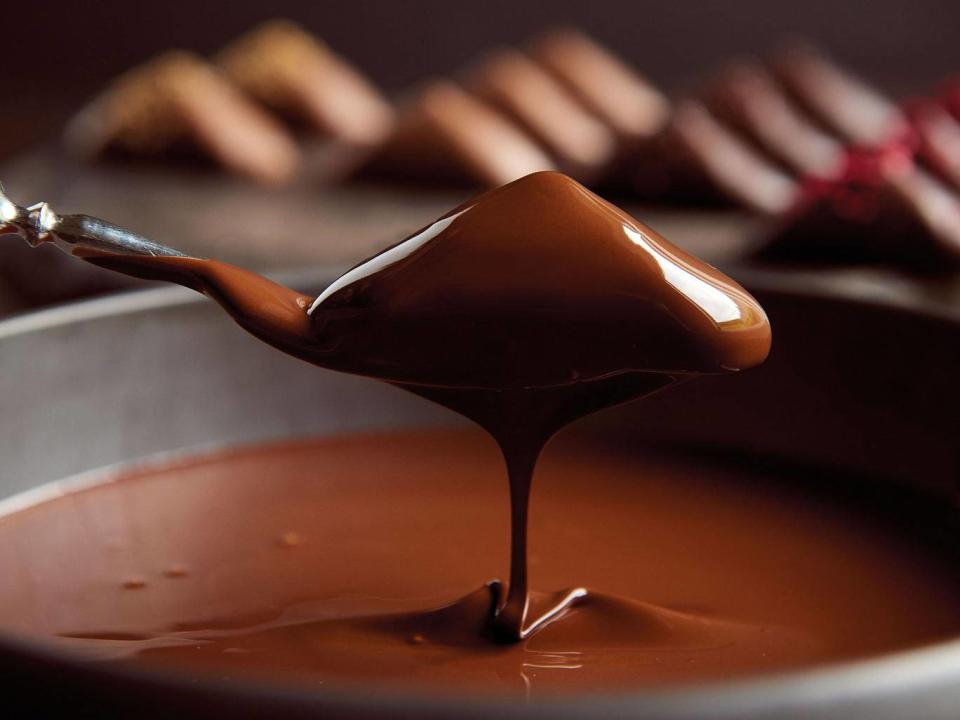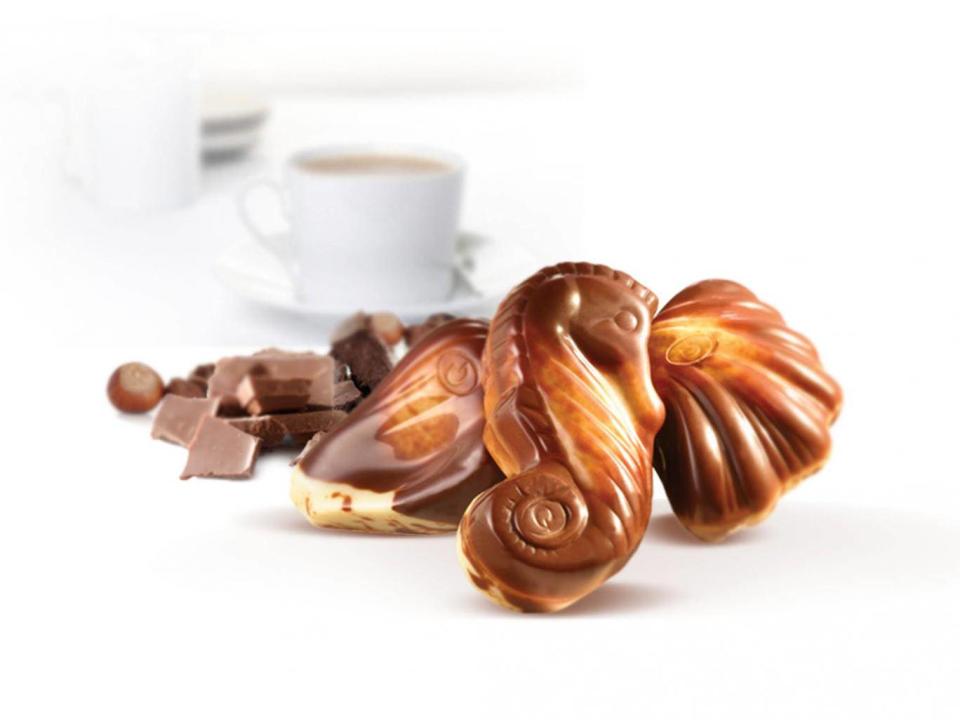How Belgian chocolate is under threat from international takeovers and 'chocolate gangsters'

Since inventing the praline more than 100 years ago, Belgium has cultivated a £3.5bn chocolate industry that accounted for 9 per cent of Belgium’s food sales last year.
Belgian chocolate, one of the country’s most popular exports, has become the ultimate seal of quality and taste, but for Belgians it runs much deeper. It is a matter of national pride – and the industry is going through an identity crisis.
Aside from the general pressures that come with operating in a globalised world where big fish eat the smaller ones, Belgian’s chocolatiers exist in a market where prices are rising, global demand is soaring, and where some of its most established chocolate manufacturers are being accused of muddying the good Belgian name.
Galler is the latest in a string of well-known brands in Belgium being bought by foreign companies.
As of last month, Galler is owned by the Qatari royal family, with Sheikh Tamim bin Hamad al-Thani, the emir of Qatar, appointed as creative director. The news prompted Flemish newspaper Het Nieuwsblad to ask: “How Belgian is Belgian chocolate, if just about all the top players are in foreign hands?”
And this isn’t an exaggeration. Sixty-year-old manufacturer Guylian is owned by the South Korean conglomerate Lotte; Chocolat Jacques, founded in 1896, is owned by the Dutch business Baronie; and Côte-d’Or and Meurisse belong to the multinational Mondelēz. And this, according to some of Belgium’s top chocolatiers, is in conflict with the battle to protect the heritage, knowledge, expertise and processes that are all unique to Belgium.

“In our dictionary, Belgian means place of manufacturing, headquarters and ownership,” Ignace Van Doorselaere, chief executive of chocolatier Neuhaus, tells The Independent. “It is essential that Neuhaus is 100 per cent Belgian. It adds pride to important details, and it’s important to ensure consistent quality.”
But Steven Candries, sales director at Guylian, argues that it is possible for companies to have foreign owners and remain true to their Belgian heritage. He insists the Guylian takeover 10 years ago “hasn’t changed anything”, and that it still produces everything in Belgium. In fact, this year it has pledged to become the first Belgian chocolate manufacturer to use no palm oil in its products, which has been linked to environmental, social and health concerns.
But some Belgian manufacturers, Candries points out, make their chocolates in factories abroad, and still call it Belgian. For example, Godiva has a factory in Pennsylvania, US.

According to Guy Gallet, the secretary general of Choprabisco (the Royal Belgian Association of the Biscuit, Chocolate, Pralines and Confectionary), it’s less important who the manufacturer’s owners are.
“What’s most important for us is that the chocolate is made here. Foreign companies don’t invest in Belgian chocolate with the aim of locating it to another county, because they couldn’t then use the Belgian chocolate name,” he says.
In some cases, however, these foreign takeovers can affect product lines. Brussels-based chocolate manufacturer Godiva, for example, is almost 100 years old and was bought by American firm Campbell Soup Company in 1966 and subsequently purchased by the Turkish Yıldız Holding in 2007. Last year the company found itself in a PR nightmare when it announced it would no longer be making pralines containing liqueur, which was, up until then, one of its signature chocolates, in order to appeal to more people.
Leading Belgian chocolatier Dominique Persoone doesn’t approve. “My grandmother always bought Godiva when I was child. They were very famous for liquor chocolate but now, with their new owners, it’s forbidden. But starting to change original recipes is not a good idea,” he tells The Independent.
Annie Young-Scrivner, Godiva’s CEO, says chocolate is part of Belgium’s national identity, and the “essence of what it means to be Belgian”.
She says Godiva is a “proud ambassador of the Belgian heritage”, and that the brand is Belgian “through and through”.
Despite accusations Godiva isn’t as thoroughly Belgian as some of its competitors, two years later it was honoured with the Belgian royal warrant, and became the official chocolatier of the royal court – a role it still holds today.
The company was taken over by Yıldız partly because Godiva was assured they shared a “mutual love and passion for chocolate”, according to the Turkis firm’s chairman Murat Ülker. Young-Scrivner says Godiva has since stayed true to its Belgian heritage, which Yıldız respects, while expanding to more than 100 countries.
“We marry innovation with tradition,” she says, offering as an example the chocolatier’s range of products, which celebrate Christmas, Valentine’s Day, Chinese New Year and Ramadan. International takeovers aren’t the only threat to the coveted Belgian chocolate label; manufacturers around the world with no connection to Belgium are using the good name to shift stock, forcing chocolatiers to stand up for what they believe constitutes true Belgian chocolate.
The label certainly hasn’t happened overnight. Since Jean Neuhaus Jr, grandson of the founder of chocolate-maker Neuhaus, invented the praline in Belgium in 1912, the country has grown and attracted some of the world’s most talented chocolatiers. It invented the ballotin, a boxed packaging that keeps chocolate fresh, developed methods to transport liquid chocolate, and introduced chocolate modelling paste.
“Over 150 years ago, Belgium was an ecosystem of chocolatiers – it was the Silicon Valley of chocolate; taste profiles were refined, and craftsmen innovated and challenged each other and improved their products,” Ignace Van Doorselaere says.
European Union legislation says that in order to call a product chocolate, it must contain no more than 5 per cent substitute fat, which is cheaper than using cocoa butter. But Belgium does one better.
Belgian chocolate bears little resemblance to the sugary confectionery that goes under the name of chocolate in other parts of the world. The key is the ingredients and the purity of the cocoa, which must conform to strict regulations. Master chocolate-makers never use substitute fats.
But manufacturers argue that the quality of Belgian chocolate, and all the hard work behind it, is being undermined by sub-par chocolate claiming to be Belgian – and not enough is being done to get the situation under control.
Guy Gallet says EU legislation on misleading labels goes some way to protect Belgian chocolate, but it’s not enough.
“We have success with it and there are fewer cases these days where we need to intervene, but it’s harder in, say, China,” he says. Choprabisco is looking at “more proactive” ways of protecting the Belgian chocolate label – one that’s more specific, as the current EU protection applies for all foods.
In the meantime, chocolatiers have written the ‘chocolate code’, which states that the complete process of mixing, refining and conching must be done in Belgium to be considered Belgian chocolate. But the code, produced by Choprabisco, isn’t compulsory, and many companies are finding ways to get around it.
“Company names and brands contain Belgian geographical names, typical symbols of flags, the Belgian royal family, anything recognisable as Belgian,” Steven Candries says, but those who break the rules can only be given a stern speaking to, because there are no laws to protect Belgian chocolate from this.
“So many are abusing the label, we need to go a step further. We must go in a legal direction, and we hope that governments will make that possible – but certain countries won’t listen to European laws, which makes it fairly difficult,” he says.

It’s happening under their noses. Tourists to Belgium’s bigger cities, Dominique Persoone says, are targeted with boxes of chocolate decorated with the Belgian flag, but the products inside barely even resemble chocolate.
“In Brussels, if you see signs for artisan, handmade chocolate, you can be sure it’s a trap. Real chocolate-makers don’t put these things on our windows, and so it’s difficult to show the difference. We have a lot of chocolate gangsters,” he says.
But this isn’t a battle of superiority, chocolatiers argue. It’s about patriotism. The battle to save the Belgian chocolate name, Candries says, isn’t necessarily about other chocolate not being as good.
“You just can’t say something is made in Belgium when it isn’t. When chocolate manufacturers outside of the country put ‘Belgian style’ on their packaging, this has nothing to do with Belgium, it doesn’t exist. It’s like saying something is ‘grandmother style’, when all our grandmothers all cook differently”.

Leonidas, a 105-year-old Belgian chocolatier, was started by Greek-American confectioner Leonidas Kestekides in Brussels. It’s now run by third-generation family members, and is fiercely proud of being ‘100 per cent Belgian’.
Chief executive Philippe de Selliers, who says the company wouldn’t consider having a factory outside of Belgium, is working with Choprabisco on further protecting the Belgian chocolate label. He says, however, the situation is still “far from OK”.
“We have to protect our brand and be sure that the quality is consistent,” he says from Shanghai, where he says he sees a lot of chocolate falsely claiming to be Belgian.
He says Leonidas is one of the last real Belgian companies, but admits this comes with some challenges. For example, only having a factory in Belgium and using the freshest ingredients means the chocolate has shorter expiry dates. But, he argues, this matters to customers, who he says want tradition and quality.
But until the name is given protection, the Belgian chocolate label will continue to mean different things to different people. For Belgian’s top chocolatiers, it means handcrafted chocolate using years of expertise and the finest ingredients, made entirely in Belgium. For high street bakery Greggs, on the other hand, it means a £1 Belgian chocolate dessert pot, a chocolate mousse containing palm oil, with 5 per cent chocolate sourced from Belgium.
Other foods fighting for protection
There are 86 protected food names in the UK, with many more hoping to gain the status, which gives legal protection against imitation throughout the EU. However, manufacturers are concerned that Brexit will cause them to lose their EU protected status, as Britain has no equivalent protection yet.
Bakewell tarts
Supporters approached the EU about getting protection for the Bakewell tart in 2008, but so far the battle hasn’t been won. Campaigners argue that only tarts made in the Derbyshire town of Bakewell should be allowed to use the labelYorkshire pudding
In 2010, efforts were made to win protected status for the much-loved Yorkshire pudding. So far, though, the only successful foods from Yorkshire to be granted protection are Wensleydale cheese and Yorkshire forced rhubarbCaerphilly cheese
Welsh makers of Caerphilly cheese, which is produced using milk from Welsh farms, are currently waiting to hear if their application for protection has been successful, after applying for the status two years ago.


